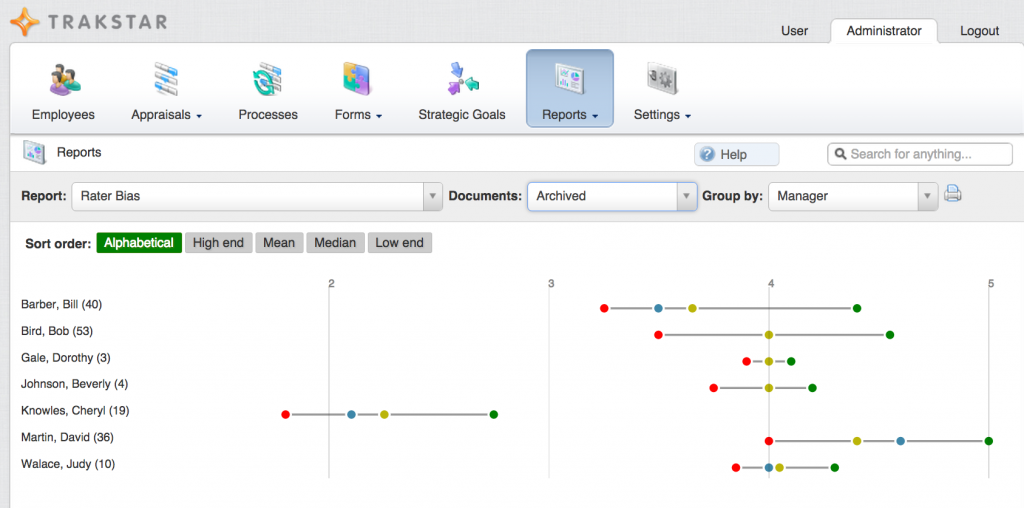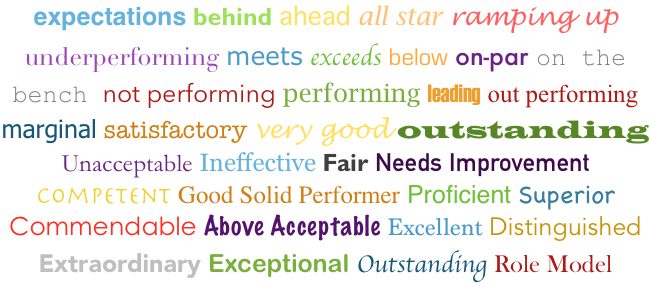Severity and Leniency Bias in Performance Management
Posted by Lauren • October 15, 2015 (Last modified July 29, 2018) • 3 min read
In the business of performance management, we strive for accuracy above all. Call out performance for being what it is – the end goal is an accurate picture of where an employee, team or department is at. But what is the sweet spot? What is the right balance of critical feedback, positive kudos for a job well done and enough inspiration for continued improvement and growth?
Accuracy can be a hard thing to find as many managers, employees and even administrators know. Performance reviews are serious business and can often put an unexpected pressure on a rater. Two ends of this spectrum we often see are, rater leniency and rater severity. This type of bias impacts a rater to score either less (leniency) or more (severity) harshly than the employee may actually deserve.
Leniency: a rater is pre-disposed to rating employees higher than may be deserved there for inflating performance appraisal ratings.
Severity: a rater is pre-disposed to rating employees lower than may be deserved there for deflating performance appraisal ratings.
Everyone is Biased
These biases are not necessarily based on the relationship between rater and subject or the work of the subject but rather an internal motivation to score a higher or lower for other reasons which may include:
- You want to seem like you have a stellar team and high ratings mean you are a great manager right?
- You don’t want to be seen as an easy rater
- Your performance or compensation is based on your team’s evaluations
- You have a preconceived notion about what a final score should be without taking into the individual elements that will create the final score
- If you provide high marks on a review the employee will get a boost of confidence and be more committed to their work
- If you score them a little lower than where they are actually at it will motivate them to work even harder
Bias can also be influenced by the rater’s personality and past experiences such as:
- They have always received very low or very high scores and ratings on performance reviews and are following in this pattern
- They always received the same score in the past and so don’t think too much about the impact of performance reviews
- They may have a tough love approach with how they provide feedback
- They may want their team to like them and have a difficult time providing less than positive feedback
So how do we find accuracy amongst all of this?
The first step to approaching biases is acknowledging that they exist. Be aware as an administrator, as a rater, as a manager. Ask for feedback from others who work with the employee as well to see if your perceptions are inline.
Administrators can also monitor reporting of biases with a Rater Bias report based on manager, department, position or location. This can visually help to identify areas in which employees are being rated more leniently or severely than others based on various filters.
As seen in the sample report below, longer lines will show a larger range in scores awarded while a shorter lines show clumping or grouping around a smaller range. It can also show how one manager, Cheryl in this case, may have a severity bias since her line is significantly behind all other managers.
Make sure your managers know why accurate performance reviews are needed, encourage them to take a step back and evaluate every employee as well as every competency, value and goal honestly and in the context of the job at hand. Just because an employee needs improvement when it comes to communication doesn’t mean that their judgment isn’t exceptional.
Here’s to finding that sweet spot, not too lenient, nor too severe just accurate.
Don't Miss Out on More Great HR Articles!
Subscribe to get the latest, greatest HR and Talent Development content straight to your inbox.



